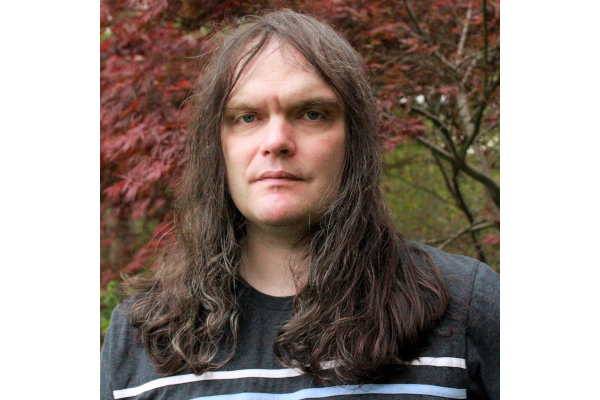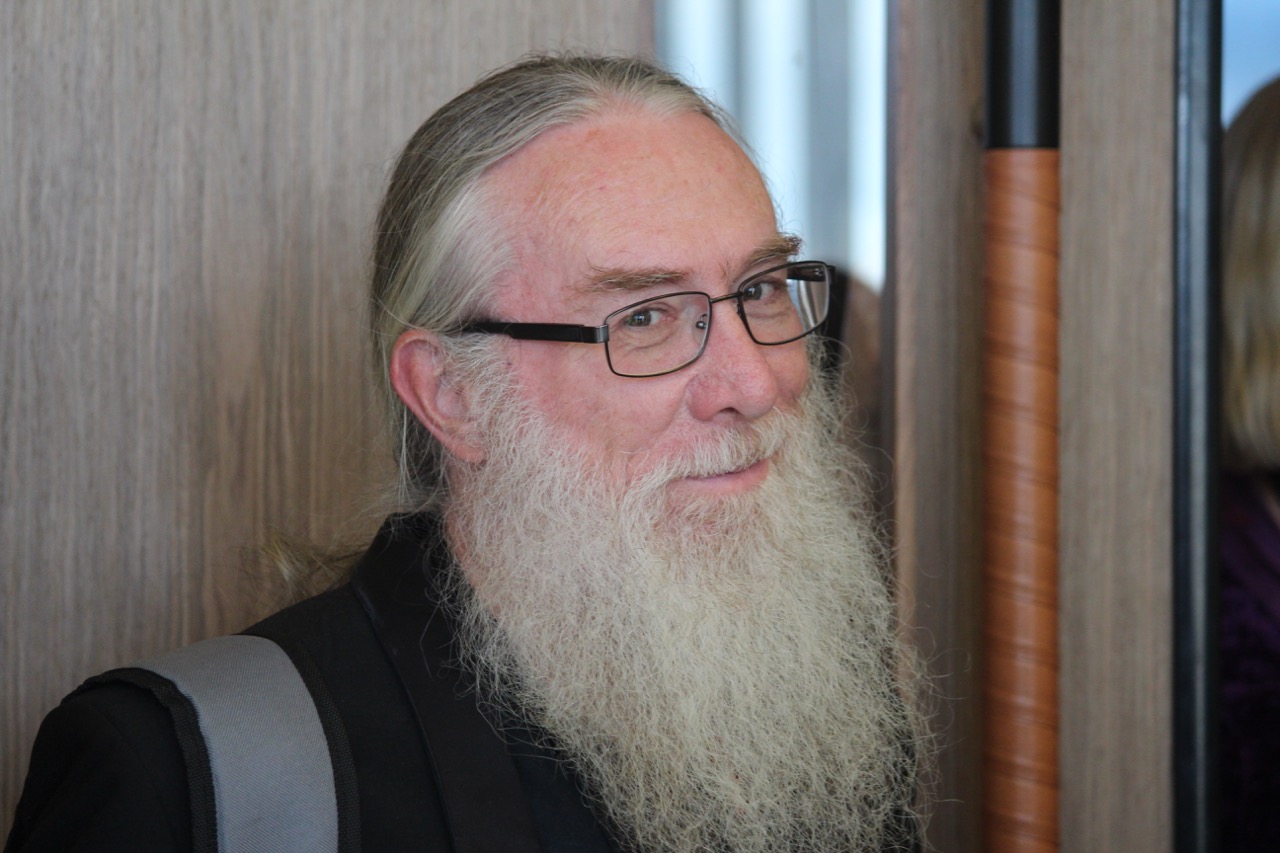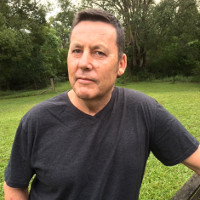By Nicolas Van Der Haar
Codename: ASTROLABE
File Number: 115391
Security Level: G38
Ministry: Wildlife & Organic Maintenance.
Staff Members:
Director Daniel Dzundza
Doctor Camilla Roth
Doctor Robin Winthrop
Doctor Max Harper
Doctor D.A. Schiff
Abstract:
The issue we have been commissioned to tackle is simple: how best to implement the Feral Wildlife Management Plans approved by various state committees.
Our state continues to face significant challenges due to large populations of feral wildlife across multiple regions. Complaints from the public regarding invasive plant and animal species have surpassed projections established by the Ministry.
In response, the Ministry has initiated Project ASTROLABE, a targeted intervention aimed at mitigating the impact of these invasive species on native ecosystems, food security, and public safety. Having begun this project, I feel it is important to highlight that a large percentage (71%, to be specific) of the feral wildlife population has resulted from government experimentation and inadequate biological containment.
The wider public is not as naïve as assumed. When they see a chicken with four wings or a dog with webbed feet breathing underwater, they know the government is likely involved. It is the Ministry’s responsibility to acknowledge these origins transparently and take evidence-based action to contain and remediate the consequences. Failure to do so risks broader ecological destabilisation and further erosion of public trust — From the Desk of Director Daniel Dzundza.
Subject: ALZA
Synopsis:
Subject ALZA is a biologically altered variant of the thick-billed raven (Corvus crassirostris). Originally native to the Horn of Africa — specifically the regions formerly known as Eritrea, Somalia, and Ethiopia — this variant is now endemic to large sections of our nation. The birds occupy empty or poorly tenanted apartments, converting them into sprawling nests made from trash, twigs, feathers, and refuse. This behavior was uncovered by police after several elderly citizens were found dead in homes inhabited by hundreds of birds.
In urban areas, ALZA has become a threat to street-based professions and homeless communities. The birds are capable of complex, coordinated attacks on humans. Police reports indicate that ALZA uses human mimicry to lure individuals into ambushes, where flocks attack until victims collapse or are rendered vulnerable enough to be fed upon. Typically, victims escape having lost a finger, eye, or ear. Autopsy reports confirm that some do not escape and are consumed until onlookers intervene. ALZA appears to encourage this, allowing its territory to be cleared before reoccupying vacant dwellings. The birds can lay up to 12 eggs at a time. They are large, averaging 80 cm (31.5 in) in length and weighing 2 to 4 kg. Flocks maintain complex family structures led by dominant females, who exile or attack disobedient males.
Resolution:
Our Ministry has confirmed sustained ALZA activity in urban sectors. A suitable short-term solution is to expand the urban patrols already established, with stipends paid to regular participants. Residents in highly affected zones should be discreetly monitored; sightings logged and escalated to relevant authorities. My long-term recommendation is to interbreed more independently minded ravens into existing flocks, with the hope that their genetics will naturally fragment larger urban groups into more manageable units — From the Desk of Doctor Camilla Roth.
Subject: BATA
Synopsis:
Subject BATA is a persistent and increasingly aggressive pastoral menace. BATA is a biologically altered variant of the red fox (Vulpes vulpes), already nicknamed by locals as ‘Locust Foxes’. This variant is significantly larger, reaching nearly 1.5 metres in length with a shortened tail of 30–35 cm, making it more aggressive but also short-lived. BATA is difficult for civilians to hunt due to its brief lifespan, denning habits, and constant predation. BATA sweeps through regional areas, consuming livestock and wildlife before digging large, intersecting dens where unsuspecting cattle and farmers risk falling into pits up to two metres deep.
Resolution:
In my opinion, it’s all very simple. We just need to hire hunters and shooters, pay them to bring in as many BATAs as they can haul, and bump up the bounty on scalps. I think if we can encourage for-profit vermin control we can equip our civilians with the means of defending themselves and their livelihoods — From the Desk of Doctor Robin Winthrop.
Subject: CREI
Synopsis:
Subject CREI is a variant of the common clothes moth (Tineola Bisselliella) that has ravaged our garment manufacturing and textile industry. The insects have infested warehouses and factories all across the state. They stink foul when swatted, the eggs even more-so. Conventional insecticides and deterrents have proven ineffective and videos of workers manually removing the insects have ruined our quality standards in overseas markets.
Resolution:
Turns out Subject CREI came out of something called Project BUTTERFLY decades back. I pulled a few strings over at the Ministry of Organic Technologies & Administration and tracked down the now-retired Doctor Konstantinovich Quie. He tells me over gherkins and vodka that CREI are designed to not handle lemon juice of all things. You spray the eggs with some vinegar, boiled water and lemon juice and they don’t hatch. We should get this info out to all warehouse and factory managers — From the desk of Doctor Max Harper.
Subject: DRIMIDI
Synopsis:
Subject DRIMIDI is a variant of the bristle-nose catfish (Ancistrus cirrhosus) that has evolved to infest many urban sewer systems. They swim upstream and attach themselves to outlet pipes, feeding on discharged waste. DRIMIDI possess exceptionally strong scales and skin, rendering most conventional pesticides ineffective and making the creatures immune to the toxic nature of their diet. Some individuals grow so large that they obstruct pipes and vents to the extent that sanitation workers must physically break them apart. The only advantage is the species’ short lifespan; however, this can also present long-term challenges, as their bodies degrade so slowly that they continue to block pipes and drains.
Resolution:
Using my contact (a Doctor Nigel Frand) in the Ministry of Organic Technologies, we were able to use an experimental anti-vandal grease on pipes and drains. Subject DRIMIDI was unable to remain secure despite how large they swelled up to be. Hopefully with some more tinkering we can also make DRIMIDI allergic to the grease. This should prevent further growth. To destroy existing colonies will require time and money, recommend incentivising affected business owners to do removal and placement of grease on their properties. If we help each other, we all benefit — From the desk of Doctor Max Harper.
Subject: EOSK
Synopsis:
EOSK is a variant of the common brushtail possum (Trichosurus vulpecula). Subject EOSK easily strips fruit from trees and tears into garbage bags for organic material. Several specimens were found behind a café, having survived on coffee grounds and bread crusts. EOSK also establish territory in roof spaces and basements. Their territorial nature means they spend the night screaming and fighting. They are significantly larger than standard possums, averaging 71 cm in length and weighing 2 to 4 kg. They have a woolly, patchy pelage that often falls out in chunks with age. Most notable are their enormous, chameleon-like eyes, able to move independently and measuring 6 to 8 cm. According to public testimony, the most irritating trait is the urine of Subject EOSK. It stains surfaces a dark brown and fills the air with the scent of rotting garbage — From the desk of Doctor D.A. Schiff.
Resolution:
Again, I think the solution is very simple. I recommend giving home and business owners that struggle with Subject EOSK weapons with which they drive out the Subjects. Encourage motor vehicle drivers a bounty for each Subject they hit at night with their car. Lace garbage hotspots with poison. If we encourage for-profit vermin control we motivate our people to find their own solutions rather than running to us every time a lemon tree has its fruit snatched away in the night — From the Desk of Doctor Robin Winthrop.
Project Resolution:
While I cannot find myself agreeing with every single resolution in this report, I believe the work we are doing serves the public interest. Solving even one of these problem subjects will help improve safety and stability in our communities. I have always believed it is our duty to follow protocol, apply our professional judgment, and act for the ultimate benefit of society. Even if we might fail in the short term, project ASTROLABE sets a standard as to what can be considered a meaningful contribution — From the Desk of Director Daniel Dzundza.
![]()
About the Author
N.H. Van Der Haar is a writer based in Melbourne.
Previous work can be read at The Victorian Reader, Antithesis Magazine and Farrago Magazine.
Read more of his work through his weekly Substack and Instagram: @nic_noc_nac.
![]()




















 Barry Yedvobnick is a recently retired Biology Professor. He performed molecular biology and genetic research, and taught, at Emory University in Atlanta for 34 years. He is new to fiction writing, and enjoys taking real science a step or two beyond its known boundaries in his
Barry Yedvobnick is a recently retired Biology Professor. He performed molecular biology and genetic research, and taught, at Emory University in Atlanta for 34 years. He is new to fiction writing, and enjoys taking real science a step or two beyond its known boundaries in his Tara Campbell is an award-winning writer, teacher, Kimbilio Fellow, fiction co-editor at Barrelhouse, and graduate of American University's MFA in Creative Writing.
Tara Campbell is an award-winning writer, teacher, Kimbilio Fellow, fiction co-editor at Barrelhouse, and graduate of American University's MFA in Creative Writing.
 Ed lives with his wife plus a magical assortment of native animals in tropical North Queensland.
Ed lives with his wife plus a magical assortment of native animals in tropical North Queensland. Mark is an astrophysicist and space scientist who worked on the Cassini/Huygens mission to Saturn. Following this he worked in computer consultancy, engineering, and high energy research (with a stint at the JET Fusion Torus).
Mark is an astrophysicist and space scientist who worked on the Cassini/Huygens mission to Saturn. Following this he worked in computer consultancy, engineering, and high energy research (with a stint at the JET Fusion Torus). Alistair Lloyd is a Melbourne based writer and narrator who has been consuming good quality science fiction and fantasy most of his life.
Alistair Lloyd is a Melbourne based writer and narrator who has been consuming good quality science fiction and fantasy most of his life.
 Merri Andrew writes poetry and short fiction, some of which has appeared in Cordite, Be:longing, Baby Teeth and Islet, among other places.
Merri Andrew writes poetry and short fiction, some of which has appeared in Cordite, Be:longing, Baby Teeth and Islet, among other places. Tim Borella is an Australian author, mainly of short speculative fiction published in anthologies, online and in podcasts.
Tim Borella is an Australian author, mainly of short speculative fiction published in anthologies, online and in podcasts. My time at Nambucca Valley Community Radio began back in 2016 after moving into the area from Sydney.
My time at Nambucca Valley Community Radio began back in 2016 after moving into the area from Sydney. Sarah Jane Justice is an Adelaide-based fiction writer, poet, musician and spoken word artist.
Sarah Jane Justice is an Adelaide-based fiction writer, poet, musician and spoken word artist. Emma Louise Gill (she/her) is a British-Australian spec fic writer and consumer of vast amounts of coffee. Brought up on a diet of English lit, she rebelled and now spends her time writing explosive space opera and other fantastical things in
Emma Louise Gill (she/her) is a British-Australian spec fic writer and consumer of vast amounts of coffee. Brought up on a diet of English lit, she rebelled and now spends her time writing explosive space opera and other fantastical things in Geraldine Borella writes fiction for children, young adults and adults. Her work has been published by Deadset Press, IFWG Publishing, Wombat Books/Rhiza Edge, AHWA/Midnight Echo, Antipodean SF, Shacklebound Books, Black Ink Fiction, Paramour Ink Fiction, House of Loki and Raven & Drake
Geraldine Borella writes fiction for children, young adults and adults. Her work has been published by Deadset Press, IFWG Publishing, Wombat Books/Rhiza Edge, AHWA/Midnight Echo, Antipodean SF, Shacklebound Books, Black Ink Fiction, Paramour Ink Fiction, House of Loki and Raven & Drake